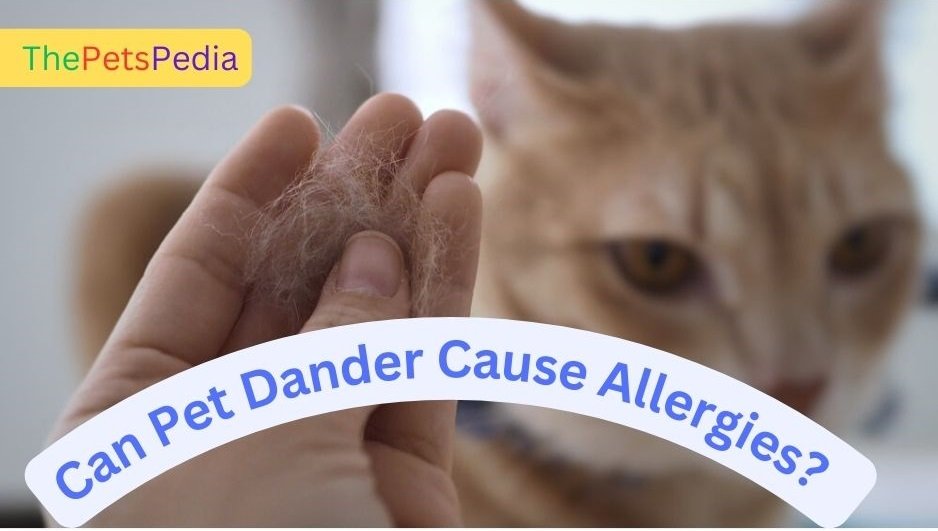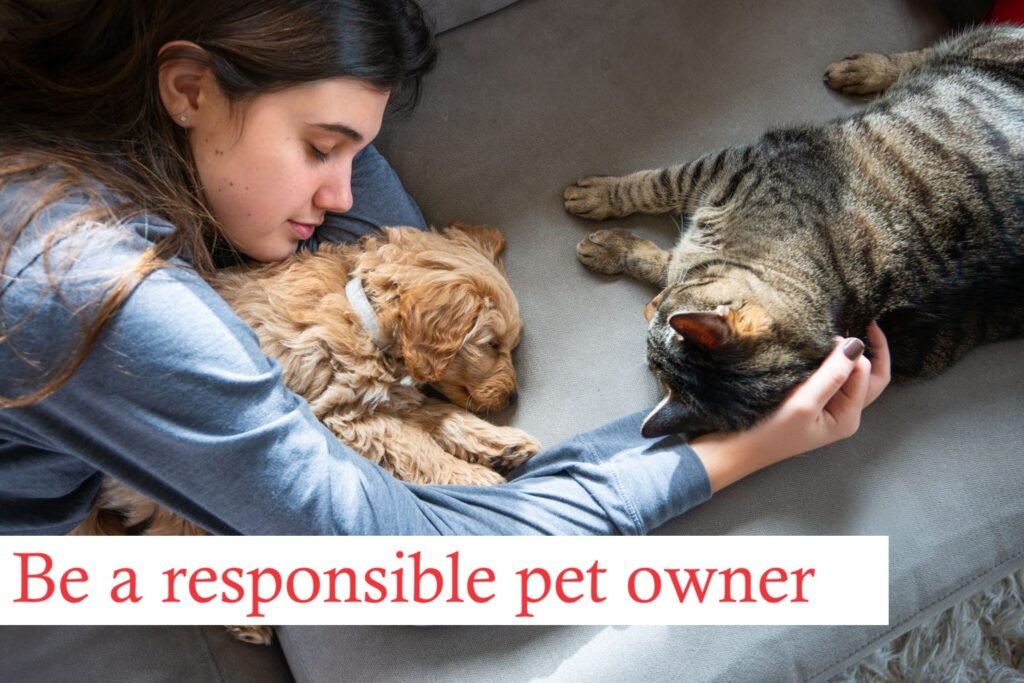If you love pets, you know how much joy they bring into your life. But for some people, being around pets can also cause sneezing, itchy eyes, and other uncomfortable symptoms. You might wonder why this happens. The answer lies in something called pet dander.
In this article, we’ll explain what pet dander is, how it can cause allergies, and how you can manage these pet dander allergy symptoms while still enjoying time with your furry friends.
What is Pet Dander?
Pet dander is made up of tiny particles of skin that pets shed. All animals with fur or feathers, like cats, dogs, birds, and even rodents, produce dander. It’s not the pet hair itself that causes allergies, but the proteins found in these skin particles. These proteins can become airborne and cause allergic reactions in people who are sensitive to them, leading to pet allergies.
Even though pet hair can carry dander, the real problem is the dander itself. It is so small and light that it can float in the air for a long time and stick to furniture, clothing, and carpets. This makes it easy to breathe in, even if the pet isn’t in the room.
How Does Pet Dander Cause Allergies?
Pet dander contains proteins that can cause your immune system to react. When a person who is allergic to these proteins breathes in dander, their body sees it as something harmful. This causes the body to release chemicals like histamines, which lead to allergy symptoms such as sneezing, itchy eyes, and a runny nose.
People who have an allergy to dogs or cats often experience these symptoms. For some, exposure to cat dander can be particularly troublesome, leading to more severe cat allergy symptoms like wheezing or even asthma attacks. Understanding the role of these allergens can help in managing pet dander allergies effectively.
Why Are Some People More Affected Than Others?
Not everyone reacts to pet dander in the same way. Genetics plays a big role in whether someone will develop pet allergies. If your parents have allergies, you are more likely to have them too. Environmental factors, like how much time you spend around pets, can also make a difference.
“Pet dander is very light and can stay in the air for a long time. This makes it easy to breathe in and have an allergic reaction, even if you’re not touching the pet,” explains Dr. Susan White, an allergy doctor.
Common Symptoms of Pet Dander Allergies
If you are allergic to pet dander, you may experience the following pet dander symptoms:
| Symptom | Description |
| Sneezing | Frequent sneezing, similar to a cold or seasonal allergy. |
| Runny Nose | Clear, watery discharge from the nose. |
| Itchy Eyes | Red, itchy, and watery eyes. |
| Nasal Congestion | Stuffy or blocked nose, making it hard to breathe. |
| Coughing | Persistent cough due to throat irritation. |
| Skin Reactions | Hives or rash after touching a pet. |
These pet dander allergy symptoms can range from mild to severe. It’s important to know the signs so you can take steps to reduce your exposure to pet dander and manage allergic reactions to pets effectively.
Common Myths About Pet Dander and Allergies
Myth 1: Only Pet Hair Causes Allergies
Fact: It’s not the pet hair that causes allergies but the proteins in the pet’s skin, saliva, and urine. Pet hair can carry these allergens, but the hair itself is not the problem. Understanding this can help people with allergies to dogs and cats manage their symptoms more effectively.
Myth 2: Hypoallergenic Pets Don’t Cause Allergies
Fact: No pet is completely hypoallergenic. All pets with fur or feathers produce dander. Some breeds may produce less dander, but they can still cause allergic reactions. So, while there are many hypoallergenic pets marketed for allergy sufferers, they may still trigger pet allergies.
Myth 3: Bathing Pets Frequently Eliminates Allergens
Fact: Regular grooming can help reduce dander, but too much bathing can make your pet’s skin dry and cause more dander. It’s best to find a balance and use special shampoos that are designed to reduce dander.
“There’s no such thing as a truly hypoallergenic pet. It’s more about managing your environment to reduce allergens,” says Dr. Michael Grant, a veterinarian.
How to Manage Pet Dander Allergies
Managing pet allergies doesn’t mean you have to give up your pets. Here are some practical tips to help you reduce your exposure to pet dander and improve your quality of life.
1. Keep Pets Out of Certain Rooms
Create a pet-free zone in your home, especially the bedroom, where you spend a significant amount of time. This can help you have a place where you can breathe easier and avoid allergens.
2. Use HEPA Filters for Pet Dander
HEPA filters for pet dander can help remove dander from the air. Place them in the rooms where you spend the most time to help reduce allergens and improve air quality.
3. Clean Your Home Regularly
Vacuum your home using a vacuum cleaner with a HEPA filter. Dust surfaces with a damp cloth to capture the dander instead of spreading it around. Regular cleaning can help reduce pet dander and manage your pet allergies more effectively.
4. Grooming Pets
Brush your pet regularly to reduce shedding. Do this outside if possible to keep dander from getting into your home. Use a pet shampoo designed to reduce dander, but don’t overdo it as it can dry out your pet’s skin. Regular grooming pets can significantly reduce allergens in your home.
5. Try Allergy Medications
Over-the-counter allergy medications like antihistamines can help control symptoms. If your symptoms are severe, talk to your doctor about prescription options or immunotherapy for allergies (allergy shots), which can help reduce sensitivity over time.
When to See a Doctor
If you have severe pet allergies or your symptoms don’t improve with over-the-counter treatments, it’s time to see a doctor. A specialist can perform allergy testing for pets to find out exactly what you are allergic to and suggest treatments that are right for you. They might recommend immunotherapy for allergies, which can help your body become less sensitive to allergens over time.
Advanced Tips for Managing Pet Dander
- Use Allergen-Resistant Bedding: Covers for mattresses and pillows can help keep allergens out.
- Replace Carpets with Hard Flooring: Carpets trap pet dander, so if possible, use hard flooring like wood or tile.
- Choose Washable Rugs: Use rugs that you can easily wash to remove allergens.
- Create a Cleaning Routine: Set up a schedule to regularly dust, vacuum, and wash bedding. This will help keep dander levels down.
Living with Pet Allergies
It is possible to live with pets even if you have pet allergies. The key is to manage your environment and take steps to reduce your exposure to pet dander. You don’t have to give up your furry friends, but you do need to be proactive about managing your symptoms.
Quick Tips for Living with Pet Allergies:
- Wash your hands after touching your pet to reduce the risk of transferring allergens to your face.
- Avoid touching your face after petting your animal, as this can transfer allergens to your eyes or nose.
- Keep your pet’s living area clean and well-ventilated to reduce dander buildup.
For those who are looking for allergy-friendly pets, it’s important to remember that while some breeds may produce less dander, there is no such thing as a completely hypoallergenic pet. Some of the best pets for allergy sufferers are those that produce minimal dander and can be easily groomed.
Conclusion:
Pet dander allergies can be tough, but with the right strategies, you can manage your symptoms and still enjoy your pets. It might take some changes in your routine, but the joy and love that pets bring into your life are worth it.
If you are struggling with allergies, talk to a healthcare professional. They can help you find the best ways to manage your symptoms so you can continue to live happily with your pets.
By following these tips and staying informed, you can reduce the impact of pet dander on your life while still enjoying the companionship of your furry friends.



